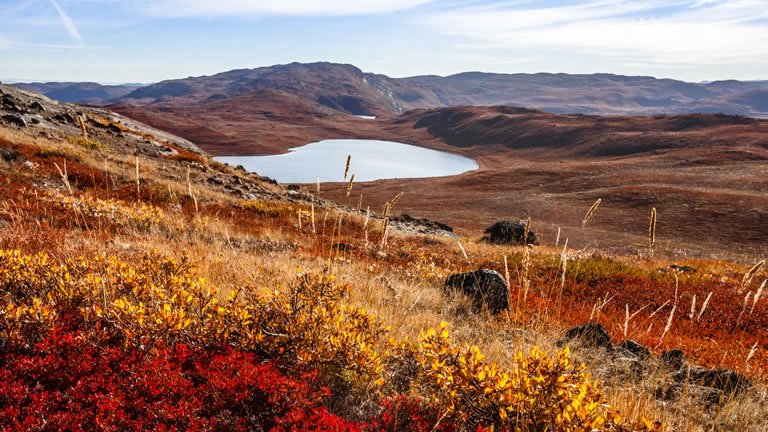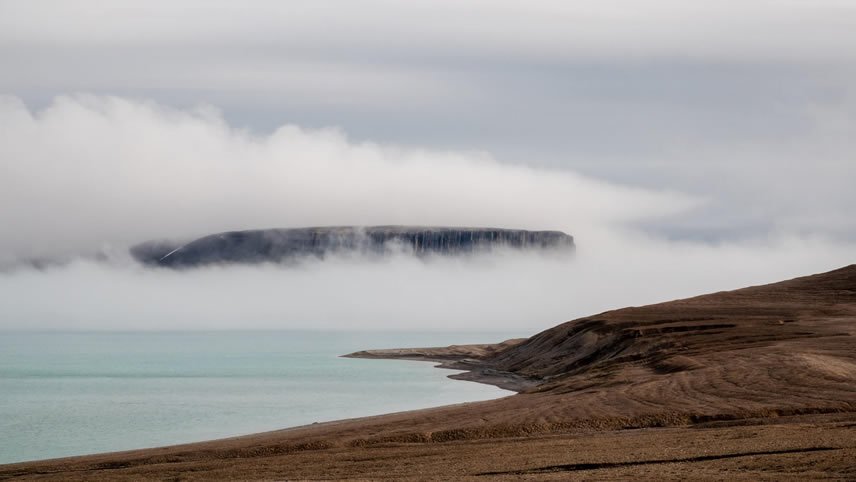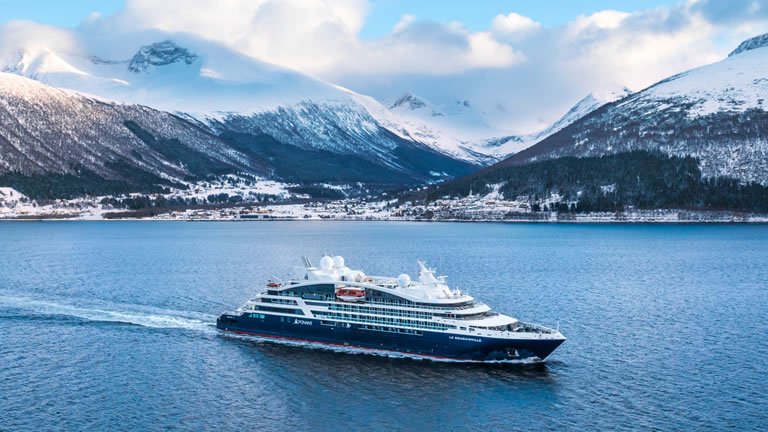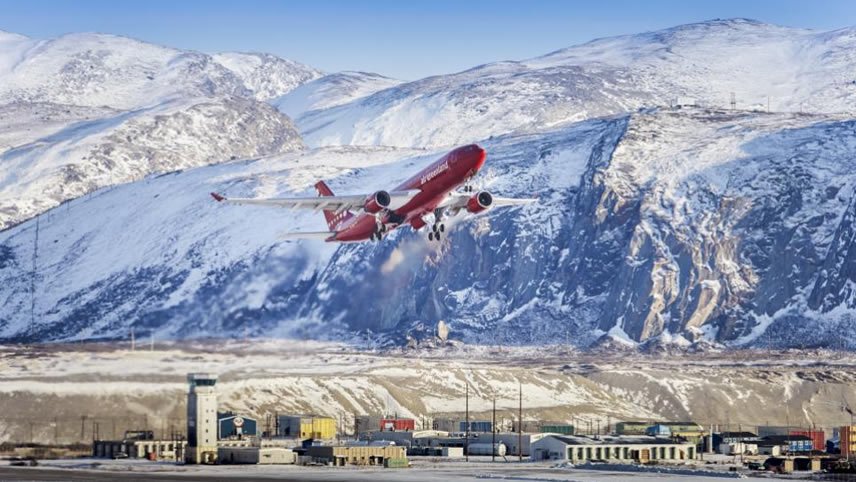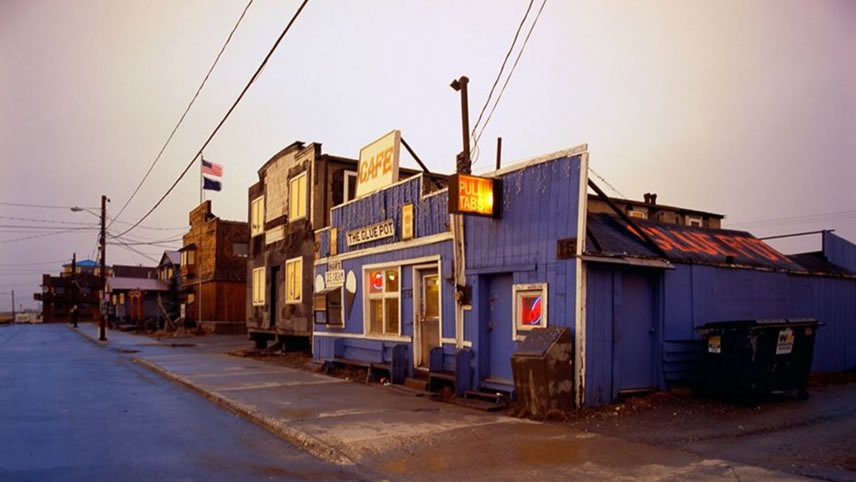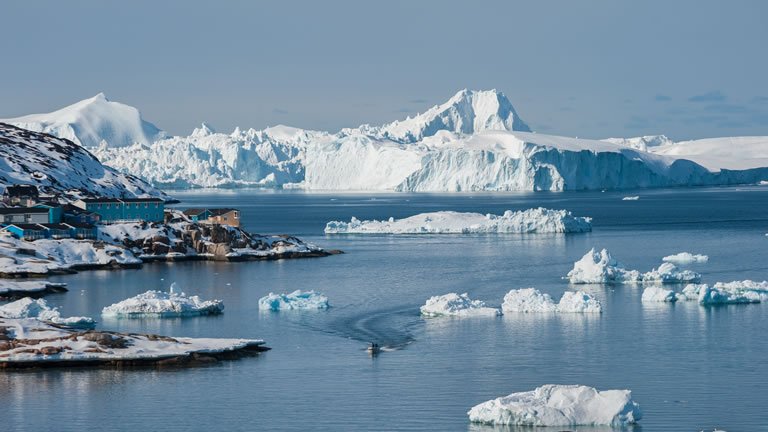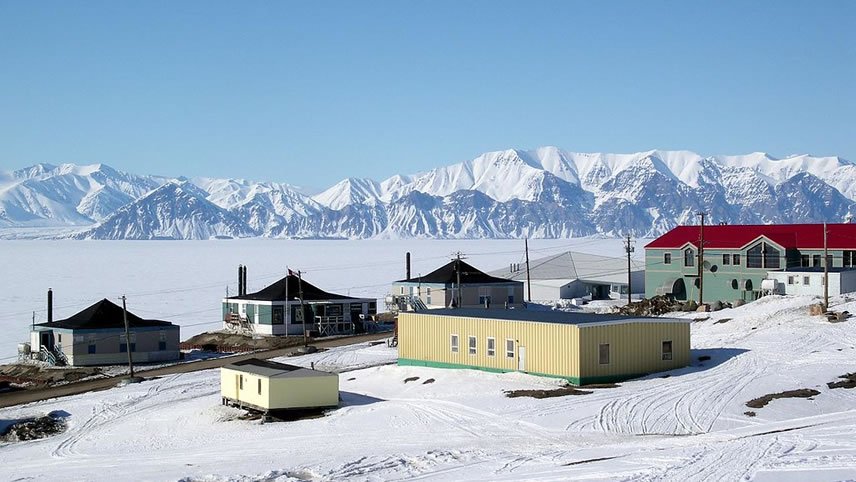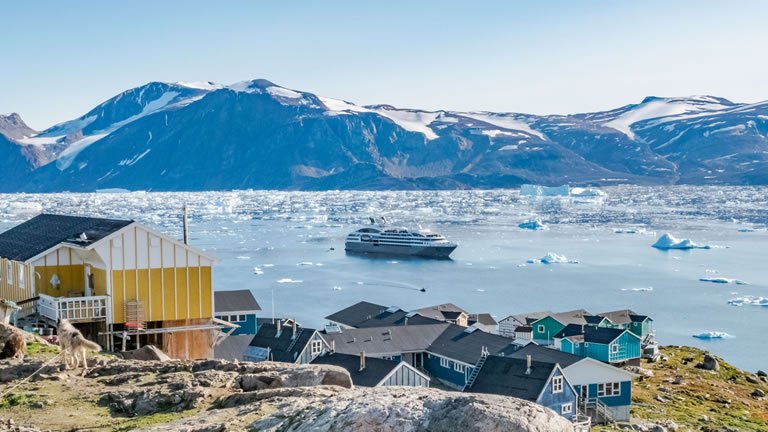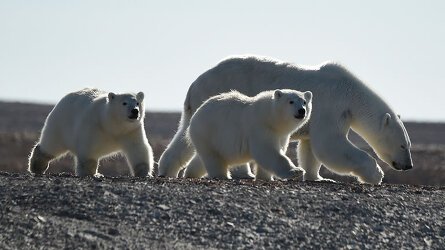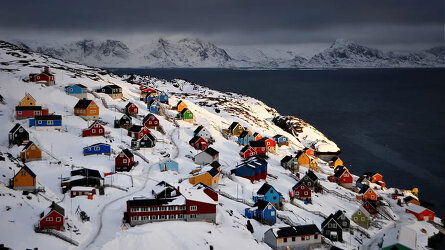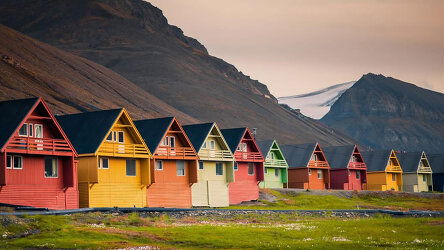Overview
Monumental icebergs criss-cross the Labrador Sea with you, to travel towards Baffin Bay. Set sail to Northern Canada and the entrance of the Northwest Passage. Amundsen was the first to pave the way on this northern route between the Atlantic and the Pacific Oceans, which long remained just a theory for navigators and scientists. In Gjoa Haven, discover the wintering site of the expedition he undertook between 1903 and 1906. Like him, get to know the Inuit people who perpetuate their ancestral traditions in the heart of grandiose nature. On Beechey Island, retrace the steps of the Franklin expedition, before marvelling at the sublime canyon at Fury Beach.
Throughout your trip, you will enter majestic fjords and sail at the edge of the ice floes, in the hope of glimpsing the polar bear, the lord of the Far North. After Bellot Strait, the narrow passage of Coningham Bay will provide the perfect spot for an encounter with remarkable beluga whales. Try to spot bowhead whales in the Beaufort Sea; as for grey whales, these occupy the waters of the Bering Strait before they migrate towards the south of the continent. An exceptional journey taking in the emblematic fauna of the Far North, dreamlike landscapes and unforgettable encounters with the people of the North.
We are privileged guests in these remote lands where we are at the mercy of weather, ice, tidal and current conditions. Landings on certain sites and the observation of certain wildlife cannot be guaranteed. They vary from day to day, making each Ponant cruise a unique experience. The Captain and the Expedition Leader will make every effort to ensure that your experience is as rich as possible, while complying with the safety rules and instructions imposed by the AECO.?
Cruise Itinerary
From 1941 to 1992, the town of Kangerlussuaq in Greenland was home to an American military base. Nowadays, thanks to its international airport, it has become a transit point for travellers seeking adventure in the Far North. Located to the north of the Arctic Circle, this town is the starting point of magnificent discoveries surrounded by unspoiled nature. Indeed, just a few dozen kilometres from there it is possible to get close to the Greenland ice sheet, the largest body of ice in the Northern Hemisphere.
From Kangerlussuaq, admire also the superb landscapes of tundra in autumnal colours, where Arctic hares, musk oxen, Arctic foxes, reindeer, falcons and eagles live.
During your cruise, we invite you to discover Sisimiut, founded in 1756 and the second largest town in Greenland. This small town is typical of Greenland, boasting bewitching panoramas: here and there, colourful stilt houses dot the undulating landscape, and the small fishing port stands as the gateway to an icy realm. As for the town centre, it is home to a number of historic buildings, a small church and a museum which retraces the history of the Inuit people, as well as many craft shops. When your ship drops anchor here, you will set out to meet the locals in a typically arctic atmosphere.
To the east of Baffin Bay, discover Disko Bay, scattered with countless icebergs produced by the Ilulissat Icefjord, a UNESCO World Heritage Site. From your ship, admire the majestic ballet of these ice giants as they slowly drift across the dark waters. This site is a natural marvel of Greenland, and is also renowned as an observation point for the region’s many humpback whales. The encounters with wild fauna and stunning landscapes in the heart of this spectacular and fragile nature will be pure moments of wonder for you.
The Eqi Glacier is one of the most active in Greenland. Here, the silence is broken only by the roaring and cracking of the ice. Imagine the vast outline of a glacier, its translucent crystals glowing with an ice-blue fire in the sunlight.
Eqi Glacier is often referred to as the calving glacier as you are guaranteed to see small and large pieces of ice breaking off the five kilometre wide glacier. Visitors are able to see Paul-Émile Victor’s shelter where the French Polar Expeditions’ anthropological and geographic explorations set off in the 1950s.
In the curve of Uummannaq Bay, opposite a narrow passage between two islands, you will discover the moonscape of the small desert island of Akulleq. The ochre yellow and orange of this mineral site look ablaze under the sunshine of the polar summer. From the island’s summit you will be able to contemplate a panoramic view of the bay’s magical landscape and its huge icebergs with surprising shapes.
Well beyond the Arctic Circle, in the majestic landscapes of Greenland’s Northwest, you will find the village of Kullorsuaq, the last bastion of Greenland’s traditional hunters. Here is where you will find Greenland’s true character… Vast mineral expanses, sumptuous mountains, impressive glaciers and, above all, the local population which still lives off fishing and seal or bear hunting.
Hospitality and respect for nature are essential elements in the daily lives of these men, who live an austere life. When we drop anchor in this remote part of the world, set off to discover these friendly people who are also talented craftsmen, deftly sewing the furs and skins of marine mammals. This will be a unique and authentic experience.
Savissivik, a small Inuit village with less than a hundred inhabitants, is a magical place. Considered to be the biggest iceberg graveyard in Greenland, it is a stunning sight to behold.
During a Zodiac outing, you can sail between these icy giants. Once on land, you can hike to a viewpoint from which to enjoy breathtaking views over these icebergs, which come in an incredibly diverse range of shapes and colours.
Savissivik Bay attracts many bears and is also known for having been the home of one of the world’s biggest meteorites, but the latter has now been moved to a museum in New York.
On Baffin Island, located in northern Canada at the mouth of the famous NorthWest Passage, there is a small Inuit settlement at the very bounds of infinity. To get there, cross the Arctic Circle, the imaginary line that separates man from lands of mystery and wonder. It’s not so much the way of life that sets Pond Inlet’s inhabitants apart, so much as the setting. Snow-capped mountains, fjords and glaciers combine in a dazzling natural environment that fills space and expands time. Some discoveries change you forever: this is one of them.
Beechey Island, at the eastern end of Resolute Bay, will call to mind some of the most important moments of Franklin’s expedition. Sir John set off in 1845 in search of the mythical Northwest Passage and was forced to take shelter in Erebus Harbour for two long years, while he waited for the ice floes to recede and allow him a way through. It is a spectacular location; seeing the three wooden grave markers, bleached by the sun (indicating the burial places of at least three of Captain Franklin’s men) and visiting the memorial that has been erected in memory of Franklin and his men can only reinforce the hushed sense of reverence. If the surrounding wilderness impresses us, the ochre and yellows of the rocky desert soften the landscape.
The ice floe gradually appears as you approach Somerset Island, in the heart of the North West Passage. In a zodiac dinghy, you will land on Fury Beach, a place with a rich history where the English explorer William Edward Parry ran aground in 1825. He left materials and supplies here in order to help the next expeditions that would pass by this site. During your hike around the majestic canyon of Fury Beach, you’ll be dazzled by the surprising landscape: the turquoise green water and sheer cliffs are reminiscent of the Grand Canyon or the High Atlas in Morocco. If fortune smiles on you, you will perhaps come across a family of polar bears roaming the enormous ice floes. A sublime hike; a sense of wonder is guaranteed.
Discover Fort Ross, the last trading post established by the Hudson's Bay Company. Constructed in 1937, it was used as a fur and whaling trading post at the same time. Fort Ross, located on a small island at the entrance to the Bellot Strait, is still home to this former store as well as the house for the manager and staff. The interior of these two buildings has been damaged over time and by the presence of polar bears. After a short walk towards the summits of the island, you will be able to enjoy a breathtaking panoramic view over the Bellot Strait and surrounding area.
A key stage in the North West Passage, the Bellot Strait, crossed by strong currents, promises you an unforgettable sailing experience. The entrance to the strait is dominated by the Ross Cairn. The buildings of Fort Ross also stand not far from here. Separating Somerset Island from the Boothia Peninsula, this 2-km-wide strait was discovered in 1852 by Captain William Kennedy of the Royal Navy, and the Frenchman Joseph-René Bellot, during an expedition in search of Sir John Franklin. Discover a magnificent décor covered in snow, fragmented by large ice floes. As you sail between them, your ship will perhaps be accompanied by a few polar bears.
At the heart of the legendary Northwest Passage, discover the sheltered Coningham Bay in the south-east of Prince of Wales Island, during an exceptional sailing. The surrounding waters, rich in nutrients brought in by the tides and currents, are home to cetaceans including beluga whales. The polar bear, lord of the Arctic, has also established its realm on this hunting ground where food tends to be abundant. When conditions are favourable, extraordinary encounters with the wildlife are possible in these isolated lands.
During your journey at sea, make the most of the many services and activities on board. Treat yourself to a moment of relaxation in the spa or stay in shape in the fitness centre. Depending on the season, let yourself be tempted by the swimming pool or a spot of sunbathing.
This journey without a port of call will also be an opportunity to enjoy the conferences or shows proposed on board, depending on the activities offered, or to do some shopping in the boutique or to meet the Ponant photographers in their dedicated space. As for lovers of the open sea, they will be able to visit the ship’s upper deck to admire the spectacle of the waves and perhaps be lucky enough to observe marine species. A truly enchanted interlude, combining comfort, rest and entertainment.
Edinburgh Island in Nunavut is a remote and scarcely visited location in the Arctic, offering a profound sense of isolation and pristine natural beauty. This small island in the Canadian Arctic Archipelago is a fantastic spot for those interested in Arctic wildlife and landscapes. Its environment is characterized by rugged terrain, icy waters, and a quiet, almost untouched wilderness.
The island's appeal lies in its simplicity and the unique opportunities it presents for wildlife observation, including sightings of seals and migratory birds that nest or pass through the area. Visitors can also explore the historical remnants of early Inuit settlements, providing a glimpse into the resilience of native cultures in such harsh climates.
Set off to meet the inhabitants of Holman for an unforgettable moment in the midst of a welcoming community. With some 500 inhabitants, this hamlet located on the west of Victoria Island has learned how best to adapt to an at-times harsh environment and a difficult climate. As you visit this village in the Canadian Far North, admire the prints and other objects created by the very rich local craftsmanship.
Traditional singing and dancing are also part of the daily life of this commune, to the great delight of fans of Inuit culture. The village of Holman, also called Ulukhaktok, is one of those places in which you can share an authentic experience in a remote land.
In the far north of the Northwest Territories, nestling at the junction of the Amundsen Gulf, the Smoking Hill astonish, intrigue and captivate. Considered one of the most fascinating and mysterious phenomena on the planet, this geological paradise, where dozens of kilometres of smoke columns emanate from impressive cliffs coloured in ochre and crimson, will take you on a timeless journey. Spotted for the first time by the British navigator John Franklin during an exploration of the region in 1926, these smoking strata of hydrocarbons result from the chemical reaction between the oil shales and the lignite deposits, a mix of clay shale and pyrite that spontaneously ignites on contact with air, causing this unique natural phenomenon.
Bordering the north coasts of Alaska and Canada, the Beaufort Sea was feared for centuries because of its extreme climatic conditions. Covered for most of the year with a thick layer of ice, and unexplored until 1914, this part of the Arctic Ocean, named in honour of the British Admiral Francis Beaufort, will reveal its magnificent icy landscapes to you. With a bit of luck, maybe you will cross the path of some polar bears, since the region is renowned for sheltering the Lord of the Arctic.
Bordering the north coasts of Alaska and Canada, the Beaufort Sea was feared for centuries because of its extreme climatic conditions. Covered for most of the year with a thick layer of ice, and unexplored until 1914, this part of the Arctic Ocean, named in honour of the British Admiral Francis Beaufort, will reveal its magnificent icy landscapes to you. With a bit of luck, maybe you will cross the path of some polar bears, since the region is renowned for sheltering the Lord of the Arctic.
Situated in the Bering Sea, King Island was discovered in 1778. It is named after James King, a crew member of the expedition led by James Cook. King Island was inhabited by a group of Inupiat until the mid-20th century; their now-abandoned village was called Ukivok. You will enjoy sailing around this island with its sheer cliffs that shelter many bird species, such as tufted and horned puffins, black-legged kittiwakes, and thick-billed murres.
Located along the Bering Strait at the westernmost point of Alaska, Nome offers the rustic charm of a former gold-mining town, set in the middle of magnificent wilderness. As you weave in and out of the brightly coloured houses, you will discover the pioneering legacy that still marks local traditions. Fishing, reindeer rearing, sledge-racing... People here live from their manual labour. The surrounding plains provide stunning vantage points for observing Arctic fauna.
Life Onboard Le Boreal
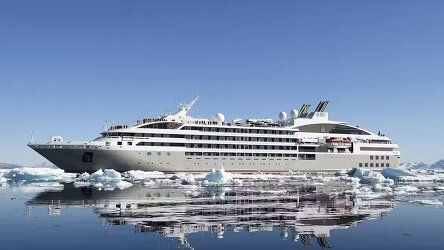
Take a voyage on Le Boreal and enjoy the sophisticated luxury of small ship cruising. Read more
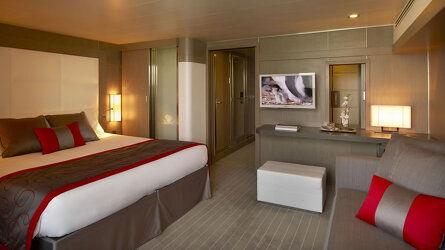
Choose from nine categories of staterooms and suites, all of which offer ocean views. Read more

Whether you choose to dine in the restaurant or at the grill you will savour Ponant's French gastronomy. Read more
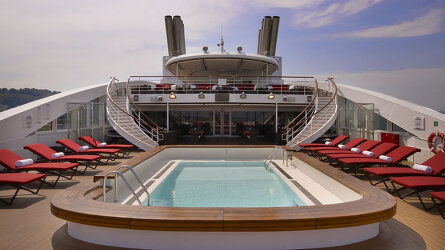
Relax on the pool deck, take in the views from the lounges or rejuvenate in the onboard spa. Read more

From the moment you embark your every need will be looked after by the French crew. Read more

Relax and unwind at the spa in a deep aromatherapy bath filled with reviving mineral salts. Read more

Le Boreal Reviews (1) Most Recent 'Le Boreal' Reviews
Brochure
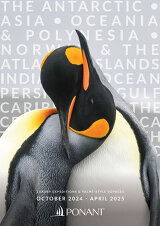
Ponant Luxury Expeditions & Yacht-Style Voyages (2024-25)
Availability Click on prices below to view cabin upgrades and details
Tour & cruises prices are per person. Prices shown have savings applied, are subject to availability and may be withdrawn at any time without notice. Pricing and trip details are correct at this point in time, however are subject to confirmation at the time of booking and are subject to change by Ponant. For cruise itineraries, cabin images are sourced from Ponant. These should be treated as indicative only. Cabin inclusions, upholsteries and room layout may differ to the image(s) shown depending on the ship selected and your sailing dates.
